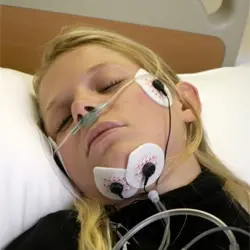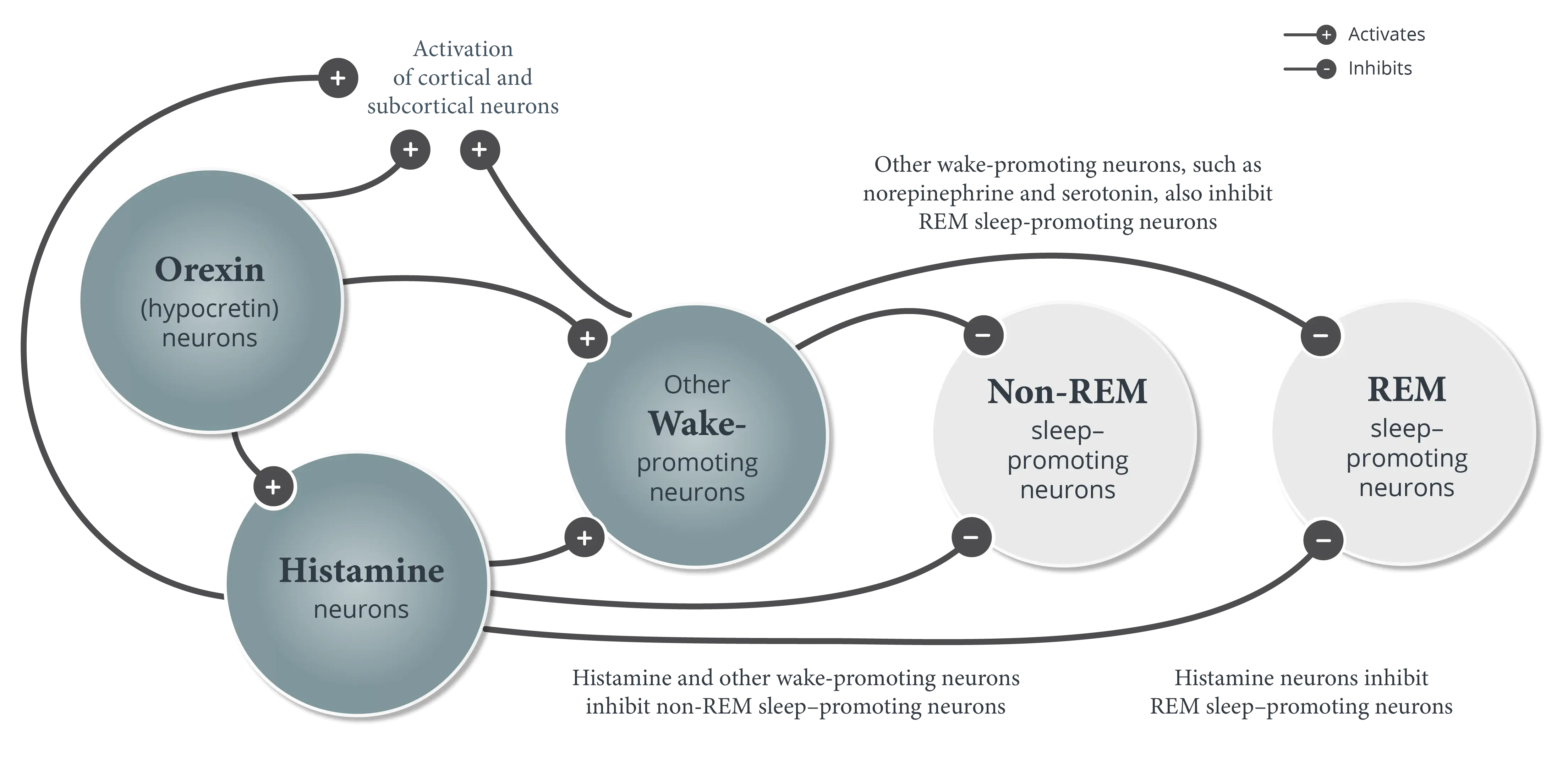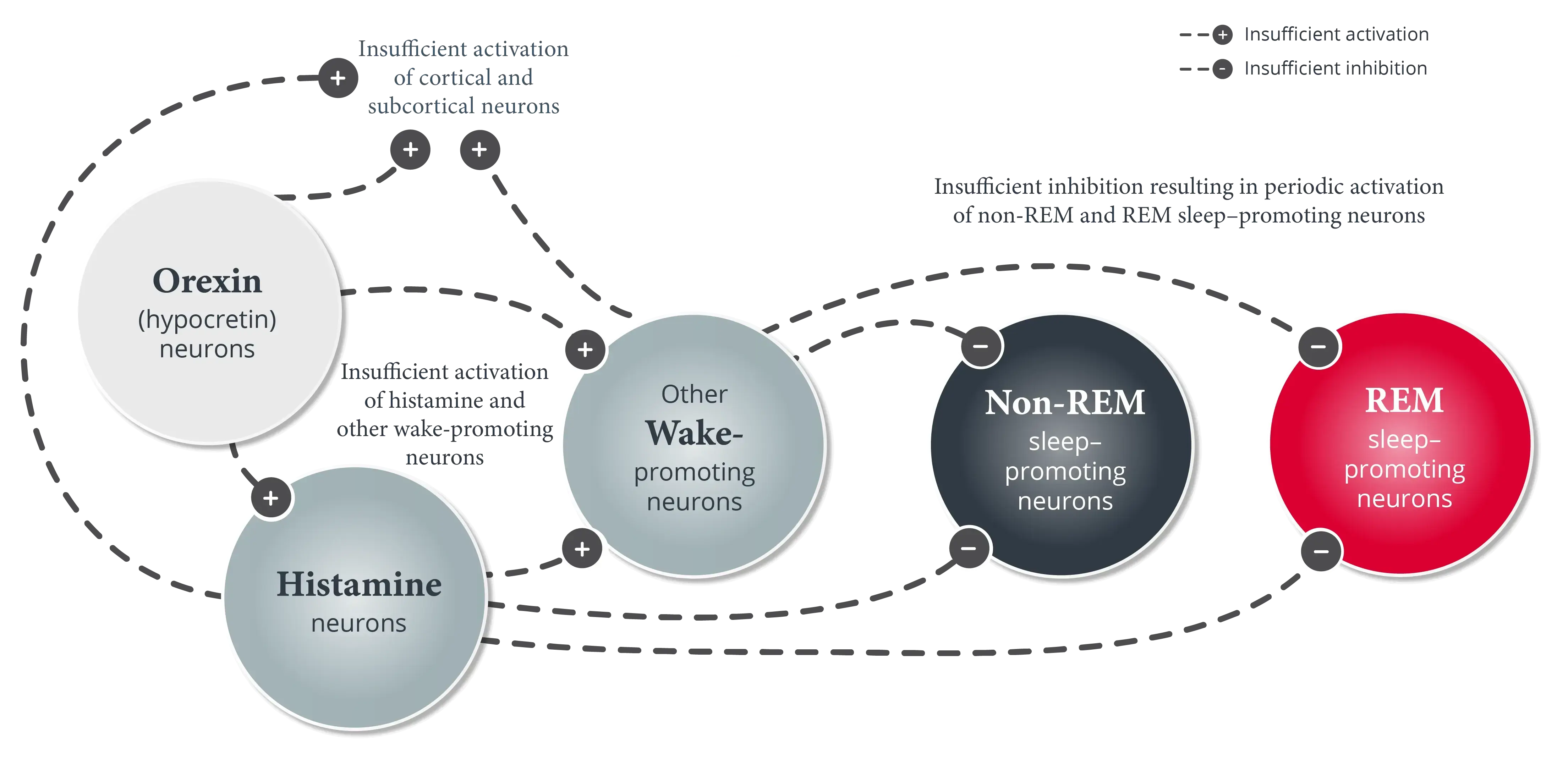

Making a Differential Diagnosis for Narcolepsy in Pediatric Patients
This content was developed using “Clinical features and diagnosis of narcolepsy in children,” published on UpToDate (2024), and the International Classification of Sleep Disorders, third edition, text revision (ICSD-3-TR), with additional support from published literature.
Making a Differential Diagnosis for Narcolepsy in Pediatric Patients
This content was developed using “Clinical features and diagnosis of narcolepsy in children,” published on UpToDate (2024), and the International Classification of Sleep Disorders, third edition, text revision (ICSD-3-TR), with additional support from published literature.
Overview
The symptoms of narcolepsy may overlap with those of other central disorders of hypersomnolence, sleep disorders, and psychiatric conditions.1,2
Delays in diagnosis and initial misdiagnosis remain common in patients with narcolepsy.3,4 Diagnosing narcolepsy in pediatric patients can be particularly challenging because their symptoms may present differently than in adult patients.2,3 Additionally, there may be differences in symptom manifestation and sleep laboratory test results between younger and older pediatric patients.1
Excessive daytime sleepiness (EDS) can be a symptom of several conditions or disorders, and narcolepsy is one of the rarer ones.2
Other potential causes of EDS, such as unhealthy sleep habits, other sleep disorders, medication/substance side effects or abuse, or depression, should be considered, particularly if the patient does not have a history of cataplexy. Having patients use wrist actigraphy and maintain sleep logs for 2 to 3 weeks can help rule out other sleep disorders as the cause of EDS.2
Attention-deficit/hyperactivity disorder (ADHD) should also be ruled out, as EDS may be expressed as inattentiveness, decreased school performance, hyperactive behavior, and behavioral problems.1,3
Pediatric patients may have difficulty describing some of their symptoms, especially sleep paralysis and hallucinations.1 Additionally, cataplexy in pediatric patients can be mistaken for atonic seizures. Unlike cataplexy, however, seizures that cause falls usually include loss of consciousness and are not typically triggered by emotion.2
Symptoms in pediatric patients can also be caused by the below. Consider each of the following, along with the differential diagnosis for adult patients in narcolepsy, when making a differential diagnosis2,3:
- Unhealthy sleep habits
- Delayed sleep-wake phase disorder
- Obstructive sleep apnea
- Idiopathic hypersomnia
- Kleine-Levin syndrome
- Depression
References
- Plazzi G, Clawges HM, Owens JA. Clinical characteristics and burden of illness in pediatric patients with narcolepsy. Pediatr Neurol. 2018;85:21-32.
- Maski K, Kotagal S. Clinical features and diagnosis of narcolepsy in children. Clinical Decision Support | UpToDate | Wolters Kluwer. Updated July 29, 2024. Accessed January 6, 2025. https://www.uptodate.com/contents/clinical-features-and-diagnosis-of-narcolepsy-in-children
- American Academy of Sleep Medicine. International Classification of Sleep Disorders. 3rd ed, text revision. American Academy of Sleep Medicine; 2023.
- Ohayon MM, Thorpy MJ, Carls G, et al. The Nexus Narcolepsy Registry: methodology, study population characteristics, and patterns and predictors of narcolepsy diagnosis. Sleep Med. 2021;84:405-414.







